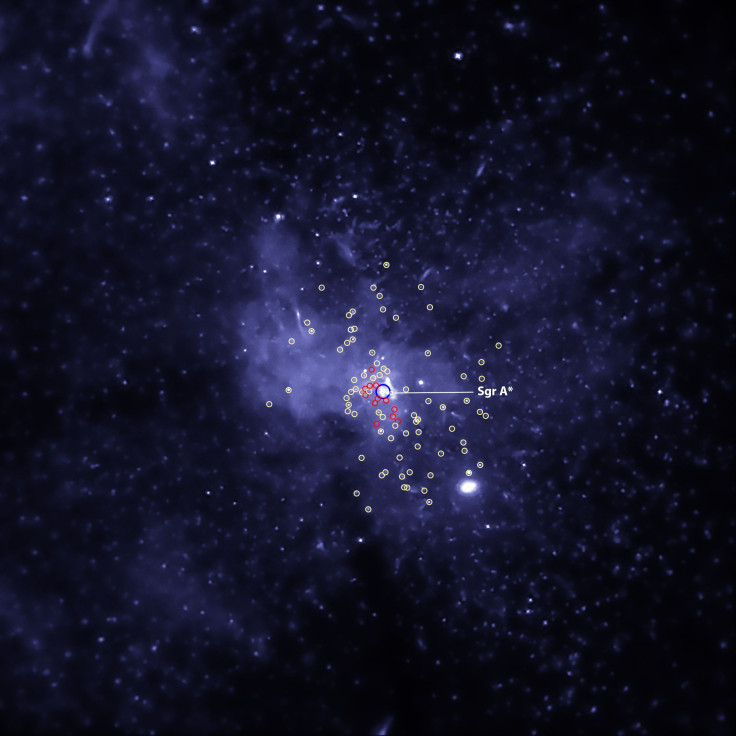Milky Way Center Has Thousands Of Black Holes, NASA’s Chandra Finds

The supermassive black hole at the center of our home galaxy, the Milky Way, has a lot of company — thousands of smaller black holes. NASA’s Chandra X-ray Observatory has found evidence to support the theory which says as many as 20,000 stellar-mass black holes could have drifted toward the galactic center and collected around Sagittarius A*, the Milky Way’s supermassive black hole also known as Sgr A*.
Stellar-mass black holes usually contain between five and 30 times the mass of the sun, while supermassive black holes are hundreds of thousands to billions of times more massive than the sun. Black holes are invisible, since their extreme gravity does not allow even light to escape, and are therefore observed using other methods.
One such method works for black holes which are locked in close orbit with another star. In these “X-ray binary” systems, the black hole — or neutron star — pulls gas from its companion star, and that gas falls onto the accretion disk around the black hole. That causes the gas to heat up to millions of degrees, producing X-rays that can be observed before they disappear into the black hole. Chandra captured some of these X-ray binaries within three light-years of Sgr A*.
Chuck Hailey of Columbia University in New York led a team of researchers who used Chandra data to search for X-ray binaries containing black holes near Sgr A*, analyzing X-ray spectra within about 12 light-years of the supermassive black hole. After shortlisting and eliminating candidates — based on data from known X-ray binaries and neutron stars — the team surmised there was a strong possibility of at least one dozen black holes in the vicinity of Sgr A* (shown in the image as red circles).
Since only the brightest X-ray binaries would be visible even to Chandra at this short distance from Sgr A*, the team postulated that a much larger population — at least 300, going up to as many as 1,000 — of fainter X-ray binary systems could be floating around the central supermassive black hole.
Theoretical follow-up to this analysis, carried out by Columbia’s Aleksey Generozov and his colleagues, suggests there should be a much larger number of black holes unaccompanied by stars they can siphon gas from near Sgr A*. These black holes could number over 10,000 and as many as 40,000, right in the center of our galaxy.
However, about half of the dozen X-ray binaries put forth by Hailey’s team could actually contain something other than a black hole as the source for the X-ray output. These could be millisecond pulsars, a specific type of neutron stars that rotates very rapidly and has a strong magnetic field.
Studying these X-ray binaries further would help our understanding of how they form as a consequence of black hole-star interactions. Knowing the number of black holes in the galactic center could also improve our knowledge of gravitational waves.
© Copyright IBTimes 2025. All rights reserved.



















